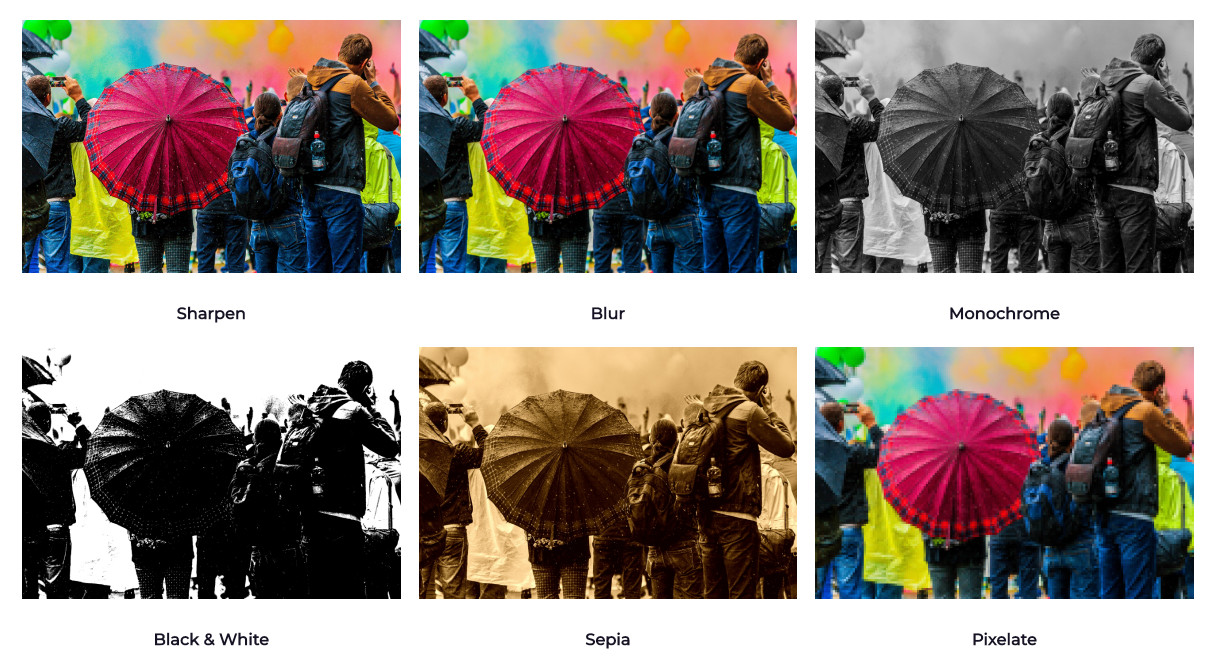Regardless of the type of business you’re running or even the audience that you’re speaking to, visual communication is and will always be important. Human beings are visual learners – there really is no getting around that. This explains why we seem naturally drawn more towards content with images than without.
According to one study, content with relevant, high quality images tend to get 94% more views than content without images – even if everything else is the same. That type of content is a full 40 times more likely to be shared on social media and it even helps people remember and retain information over the long-term.
Thanks to the advent of digital and mobile photography, taking existing images and transforming them to better fit your needs is now easier than ever. But creating the tools that can actually act on and execute these transformations is often a different story altogether.
Advanced Image Transformations
Red Eye Removal
The Red-Eye Effect, for example, usually takes the form of the appearance of red pupils when the eyes of a subject are photographed. It tends to occur when a photographic flash is used that itself is located very close to a camera lens (as would be the case with nearly all compact cameras in existence, as well as with smartphones and other types of mobile devices), when photographing a subject in an environment with very low ambient lighting.
There are a number of things that a photographer can do to avoid this altogether, including increasing the lighting in the room and making sure that their subjects aren’t looking directly at the camera. As most photographers usually have limited control over their subjects, however, this is often a lot easier said than done. Once it occurs it becomes a “part” of the finished photo, even if the phenomenon wasn’t technically there in real life.
Upscale
Another example of an advanced image transformation would be upscaling, which essentially involves increasing the overall size of the image while preserving as much of the original detail as possible. When the original photo was already of a superior quality with a high pixel count, even a significant upscale wouldn’t cause too much loss or distortion. Photos captured with old cameras (or taken from social media sites that automatically reduce image size upon upload), however, will often wind up blurry, overly pixelated or worse.
Enhance
Finally, there is the general category of “enhancements” – a term that can mean many different things depending on what you’re trying to accomplish in the moment. Examples of this can include but are not limited to things like cropping a photo to change its composition, using software to either enhance or change its focal point, enhancing a blurry background, changing the saturation or color intensity and more.
How To Get Started
For companies that are going to be ingesting a lot of images, developing these types of tools in-house can always be a challenge. Writing the software to handle these tasks is difficult, as it requires that program to essentially treat every individual element of a photo as its own separate entity or layer. Instead of the program seeing a photograph as exactly that, it essentially needs to break things down into the sum of its parts – it needs to “understand” that the background is different than the foreground (and thus the depth implications), that all colorful eyes are not The Red-Eye Effect, that the quality of an image when upscaling is directly proportional to the original pixel density and more. It’s possible to go through each image by hand and make the necessary adjustments via human intuition, but even if you’re only talking about 100 photos you’re still talking about a massive time requirement – to say nothing of how tricky things become if you’re talking about thousands of them.
Filestack, on the other hand, is a viable alternative to all of these issues for most companies – allowing you to make advanced image transformations like resizing, cropping, sharpening, general enhancements and more to a massive number of photos at once by setting parameters before they’re actually uploaded into the service. Additional functions can also be performed like facial recognition as well.
When upscaling a photo, for example, you can select your maximum allowed dimensions at the beginning of the process. Based on what you know about the original dimensions and resolution of your photos, you can then upscale them as much as possible while also preserving as much of the original quality as you can.
Filestack’s own image transformation API makes this all as easy as constructing a URL. All one has to do is add one or more of the aforementioned conversion tasks to the URL and the software itself is sophisticated enough to take care of the rest.
If you’re interested in getting these features for your application, reach out to us today or browse our full list of image transformations.
Filestack is a dynamic team dedicated to revolutionizing file uploads and management for web and mobile applications. Our user-friendly API seamlessly integrates with major cloud services, offering developers a reliable and efficient file handling experience.
Read More →
